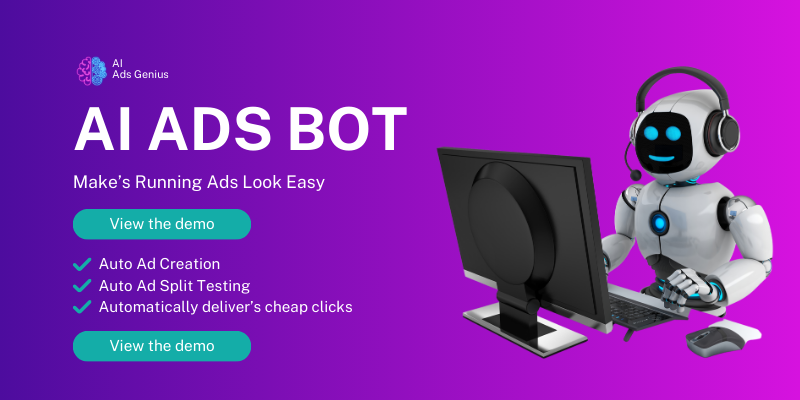Understanding Your Goals
Defining Clear Objectives
When it comes to Facebook ads, the first step I take is to really nail down what I want to achieve. Do I want more website visits, higher engagement, or perhaps an increase in sales? By setting clear goals upfront, I can frame my entire strategy around them. It’s kinda like mapping out a road trip — if I don’t know my destination, I’ll just be wandering aimlessly.
Once I’ve established my goals, I can then determine the metrics that matter. For instance, if I’m aiming for sales, I’ll be looking closely at conversion rates. If it’s engagement, I’m all about those likes, shares, and comments. This helps in evaluating the performance of my ads as I move forward.
So, setting clear and concise goals not only provides a roadmap for my Facebook ad journey but also sets the tone for how long I’ll need to optimize my campaigns. It’s all about that clarity!
Audience Research
Identifying Your Target Audience
The next thing on my list is audience research. I can’t stress enough how important it is to know who I’m talking to. Facebook provides a treasure trove of data and tools to help me figure out what my ideal customer looks like. I often create buyer personas, which helps me visualize the audience I want to target.
Understanding demographics, interests, and behaviors helps fine-tune my ad targeting. Plus, knowing what resonates with my audience — humor, value, or information — can make my ads more effective. The more specific I can be, the less money I’ll waste trying to appeal to everyone.
As I gather insights, I develop different segments to test various messages and visuals that might resonate differently across my audience. This research phase can take a bit of time, but trust me, it pays off in the long run!
Running Initial Tests
Setting Up A/B Tests
Before diving deep into optimization, I always recommend running some initial tests. A/B testing is crucial for finding out what works best. I usually start by creating different versions of my ads to see which element — be it the image, text, or call-to-action — performs better.
Once the tests are live, I keep a close eye on the data. I look for significant trends instead of getting hung up on day-to-day fluctuations. Over time, the data will reveal patterns that guide my decisions going forward. It’s kinda like experimenting; sometimes, you have to mix a few things up to find the right combo!
These initial tests might take a few days to gather enough data, but they’re worth it! They lay the groundwork for more robust optimization later on, so I don’t regret putting in that time.
Analyzing Performance Data
Monitoring Key Metrics
Once the initial data starts rolling in, I dive into analyzing the performance metrics. I check out impressions, clicks, click-through rates, and conversion rates. This analysis is vital to understanding how my audience is interacting with my ads.
One thing I’ve learned is to focus on the metrics that align closest with my goals. If I’m looking for engagement, I’ll focus less on conversion rates and more on interaction stats. It’s all about filtering through the noise to get to what really matters.
Over time, I get a much clearer picture of what works. Sometimes, I find that a small tweak makes a big difference — like adjusting the ad copy or changing the audience slightly. It’s a continuous process of learning and adapting!
Implementing Changes and Iterating
Making Data-Driven Adjustments
After analyzing the data, I’m ready to make changes. This is where the real magic happens. Based on insights, I’ll tweak ad elements or even rethink my strategy entirely. I see this as a natural progression, and it’s about creating a cycle of continuous improvement.
One of my go-to adjustments is optimizing budget allocations towards high-performing ads. If one ad is getting significantly more traction, I’ll funnel more resources toward it. It’s all about recognizing what’s working and leaning into it!
Furthermore, I constantly remind myself that optimization is an ongoing journey, not a one-time fix. Regularly iterating based on performance keeps my ads fresh and relevant, ensuring I’m always connecting with my audience in meaningful ways.
FAQ
1. How long does it usually take to start seeing results from my Facebook ads?
It varies, but typically, you should start seeing initial results within a week or two. However, optimization is a continuous process!
2. What kind of goals should I set for my Facebook ads?
Your goals should reflect what you want to achieve, like increasing website visits, boosting engagement, or driving sales. Make them specific and measurable!
3. How often should I analyze the performance of my ads?
I recommend checking on your ads at least weekly initially, then you can adjust based on performance. The key is to not wait too long!
4. What metrics should I focus on when analyzing my ads?
The metrics depend on your goals! If you want conversions, focus on click-through rates and conversion rates. For engagement, look at likes, shares, and comments.
5. How can I effectively implement changes based on my ad performance?
Use the data-driven insights to tweak specific elements, whether it’s the ad copy, visuals, or target audience. Remember, small adjustments can lead to big improvements!

